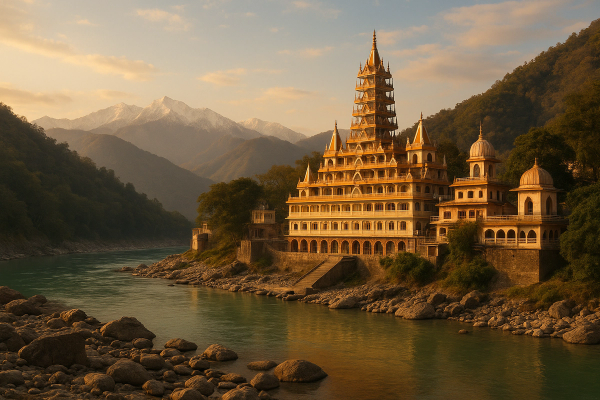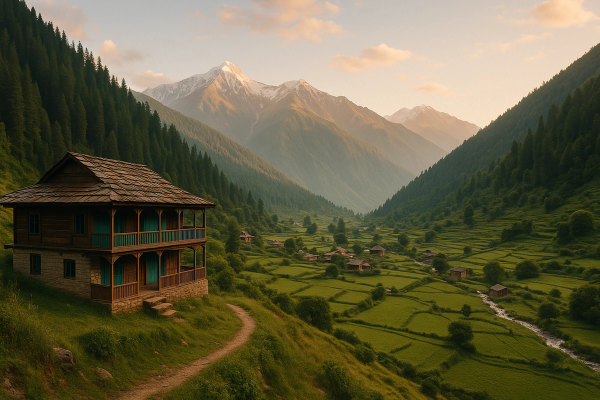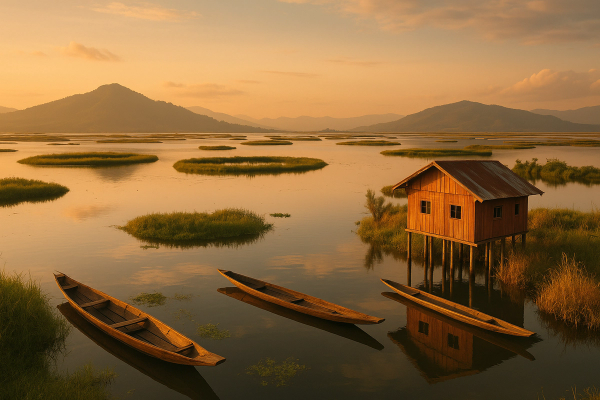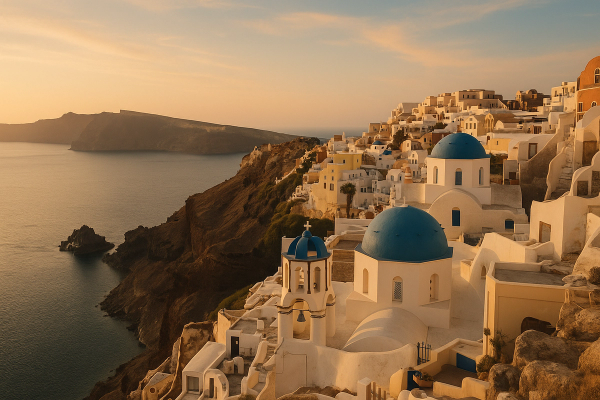Okay, Let's Talk Swiss Alps Hiking (My 2025 Guide!)#
Sooo, I just got back from Switzerland, and honestly? My legs are still kinda sore, but my brain is buzzing. The Swiss Alps... man, they're just something else. Pictures don't do it justice, not even close. I spent—wait, was it two weeks? Yeah, about two weeks trekking around, mostly easy to moderate Swiss Alps hiking trails 'cause, you know, I'm not exactly climbing the Eiger over here lol. But the views? Insane. Think emerald valleys, ridiculously blue lakes, snowy peaks just there... it's the kind of Europe nature travel that resets your soul. Anyway, tons of people ask me about hiking there, especially families, so I figured I’d jot down my thoughts and tips for 2025. Consider this your friendly, slightly chaotic guide to the best seasons and trails.¶
The Swiss Alps Vibe: More Than Just Fancy Chocolate#
Right, so the Alps aren't just in Switzerland, obviously, but the Swiss part? It's got this unique mix. Super organized (hello, punctual trains!), stunningly beautiful, and yeah, kinda pricey, not gonna lie. But the hiking infrastructure is incredible. Trails are marked better than my route to the fridge at midnight. You've got charming little villages tucked away, cows with bells that actually sound relaxing (mostly), and mountain huts serving surprisingly good food. It’s less about hardcore mountaineering (unless you want it to be!) and more about accessible Alps trekking and enjoying jaw-dropping scenery without needing, like, an oxygen tank. It’s a huge part of Switzerland travel culture.¶
When Should You Actually Go Hiking?#
Timing is kinda crucial 'cause snow is a thing, even in summer at higher altitudes. Here’s the lowdown:¶
Summer (June - August): Peak Season Buzz#
This is when everyone goes. Weather's generally warmest, most trails are open (key!), and all the lifts and huts are running. It's great, but crowded. Like, 'wait for the cable car' crowded sometimes.¶
- Pro: Best chance of sunny days, everything's accessible.
- Con: Peak prices, popular trails can feel busy. Book accommodation WAY ahead.
My take? July was amazing for wildflowers, but honestly, I'd aim for late August or early September next time to miss some of the crowds.
Fall (September - October): The Golden Ticket?#
Okay, this might be the sweet spot. Fewer people, gorgeous autumn colors (think golden larches!), crisp air... it’s pretty magical. BUT, weather can be more unpredictable. Some higher trails might get snow, and some lifts/huts start closing mid-October.¶
- Pro: Stunning colors, fewer crowds, often stable weather in early Sept.
- Con: Shorter days, cooler temps (pack layers!), risk of early snow, some services closing.
Spring (Late May - Early June): Hit or Miss#
Lower trails start opening up, valleys are super green, and waterfalls are roaring. Sounds idyllic, right? It can be, but many higher routes are still snow-covered. It's kinda shoulder season – less busy, but you need to pick your trails carefully.¶
- Pro: Lush scenery, fewer people than summer.
- Con: Limited high-altitude hiking, potentially muddy trails, variable weather.
Winter (November - April): Different Game#
This is ski season, obvs. Hiking transforms into winter walking or snowshoeing on specific groomed trails. Beautiful in its own way, but not the classic Swiss Alps hiking experience we're talking about here.¶
| Season | Hiking Window | Crowds | Vibe | Good For |
|---|---|---|---|---|
| Late Spring (May-Jun) | Lower trails, valleys | Moderate | Green, waterfalls | Valley walks, avoiding peak season |
| Summer (Jul-Aug) | Most trails open | High | Warm, busy, full service | High routes, families needing guaranteed access |
| Early Fall (Sep-Oct) | Most trails open (check later) | Moderate-Low | Cool, colorful, quieter | Best overall views & fewer people (my fave!) |
| Winter (Nov-Apr) | Limited groomed trails | High (ski areas) | Snowy, ski-focused | Winter walking, snowshoeing |
Getting There & Around: Trains are Your BFF#
Flying into Zurich (ZRH) or Geneva (GVA) usually makes sense. From there? Forget renting a car, honestly. The Swiss Travel System (trains, buses, boats, even some mountain lifts) is chef's kiss. It’s efficient, scenic, and gets you right to the trailheads or mountain villages.¶
The Swiss Travel Pass: Worth It?#
Okay, it seems expensive upfront. Like, really expensive. But if you plan on moving around a lot and using mountain railways/cable cars (which are pricey individually), it often pays off. Do the math for your itinerary, but the convenience factor is HUGE. Plus, free museum entry is a nice perk for rainy days (which, let's be real, happen).¶
- Get the SBB Mobile app. Seriously. Live schedules, platform numbers, ticket purchasing – it's essential Switzerland travel tech.
- Trains often have designated spots for backpacks/luggage.
- Don't be late. Swiss trains wait for no one. Except maybe cows on the track, idk.
Personal fail: Misread the schedule once and ended up on a scenic detour that added an hour. Nice views, but almost missed my connecting cable car. Double-check those times!
Where to Stay: Mountain Village Vibes#
You'll likely base yourself in one or two key regions. The Jungfrau region (Grindelwald, Wengen, Mürren) and the Zermatt area (hello, Matterhorn!) are super popular for a reason. But there are tons of other amazing spots.¶
Popular Bases for Hikers:#
- Grindelwald: Lively, accessible, tons of trail options nearby. Can feel a bit touristy, but the Eiger view never gets old.
- Wengen/Mürren: Car-free villages perched on the mountainside. Quieter, stunning views, feels more 'alpine'. Access is via train/cable car only.
- Zermatt: Iconic Matterhorn views, huge hiking area. Also car-free and quite upscale/pricey.
- Lauterbrunnen: Down in the valley known for its waterfalls. Good base if you want easy access to both Wengen and Mürren sides.
- Less Crowded Gems: Consider places like Kandersteg (Oeschinensee!), Appenzell (unique landscape), or Pontresina (Engadin Valley).
Accommodation ranges from fancy hotels to basic 'Berggasthäuser' (mountain inns) and holiday apartments. Book early, especially for summer and popular villages. I stayed in a cute little chalet apartment in Wengen booked via Airbnb – pricey, but waking up to that view? Worth it, tbh.¶
Let's Hike! Best Scenic & Family-Friendly Trails#
Okay, the main event! There are literally thousands of kilometers of trails. It’s kinda overwhelming. Here are a few I loved, ranging from easy strolls to slightly more challenging (but totally doable) Alps trekking routes.¶
Family-Friendly Favourites (Easy Peasy)#
- Grindelwald First - Bachalpsee Lake: Classic! Take the cable car up to First. The walk to the lake is mostly flat, maybe an hour each way? Stunning reflection views of the mountains in the lake. Super popular, go early or late. There's also a cliff walk at First which is... interesting if you don't mind heights. (I kinda do, lol).
- Mürren - Grütschalp Panorama Trail: Take the little train from Lauterbrunnen up to Grütschalp, then walk the easy path to Mürren (or vice versa). Jaw-dropping views across the valley to the Eiger, Mönch, and Jungfrau. Mostly flat, maybe 1.5 hours? Perfect for little legs or a relaxed afternoon.
- Zermatt - Riffelsee Lake Trail: Need that Matterhorn reflection shot? Take the Gornergrat train up, get off at Rotenboden, and it's a short downhill walk to Riffelsee. Can continue hiking down to Riffelberg or Riffelalp for more views. Easy, iconic.
Kid Tip: Many trails have playgrounds or themed activity stations along the way. Look for 'Themenweg' signs. Kept my nephew entertained when the views weren't quite holding his attention.
Scenic Routes with a Bit More Oomph (Moderate)#
- Oeschinensee Panoramaweg (Kandersteg): OMG, this lake. Take the gondola up from Kandersteg. The hike *around* the lake (trail #8) is spectacular. Some uphill bits, narrow sections, maybe 3 hours? The views down to the turquoise water are unreal. One of my absolute highlights for Swiss Alps hiking.
- Schynige Platte - Faulhorn - First: Longer day hike, but WOW. Train up to Schynige Platte (vintage train, cool experience itself). The ridge walk towards Faulhorn has constant amazing views. Can be challenging (6ish hours?), but you can shorten it. We hiked partway and looped back - still incredible.
- The 5 Lakes Walk (Zermatt): Another classic. Starts from Blauherd (via lift). Hike past five (well, kinda five, some are small!) lakes, each with different Matterhorn views. Around 2.5-3 hours, some ups and downs but nothing too crazy. Stellisee is the famous reflection one.
Trail Markings: Yellow signs are standard hiking trails. Red-and-white marked trails are 'mountain paths' – expect steeper, narrower sections. Blue-and-white are alpine routes = experienced hikers only!
Food on the Trail: Rösti and Rivella Time!#
Hiking makes you hungry, duh. Thankfully, mountain huts ('Berghaus' or 'Hütte') are strategically placed along many trails. Don't expect Michelin stars, but do expect hearty, satisfying food with killer views.¶
Must-Try Mountain Grub:#
- Rösti: Basically a giant hash brown, often served with eggs, cheese, or sausage. Perfect hiker fuel.
- Älplermagronen: Swiss mac 'n' cheese, usually with potatoes, onions, cheese, and served with applesauce. Sounds weird, tastes amazing after a climb.
- Cheese/Meat Platters ('Plättli'): Simple but delicious local cheeses and dried meats. Great for sharing.
- Apfelstrudel: Okay, maybe more Austrian, but widely available and always welcome.
- Rivella: A uniquely Swiss soft drink made from milk whey. Gotta try it at least once! (It's... interesting).
Cash is King: While some huts take cards now, especially bigger ones, always carry enough Swiss Francs (CHF) for food and drinks, just in case. Reception can be spotty up there.
Practical Tips for Your Swiss Hike Adventure#
Alright, boring but important stuff:¶
What to Pack (Beyond the Obvious)#
- Layers, layers, layers: Seriously. T-shirt, fleece, waterproof/windproof jacket. Weather changes FAST.
- Broken-in hiking boots/shoes: Don't buy new ones right before! Good grip is essential.
- Sun protection: Hat, sunglasses, high SPF sunscreen. Sun is intense at altitude, even on cloudy days.
- Reusable water bottle: Tap water is excellent. Fountains often available in villages and sometimes on trails.
- Basic first-aid kit: Blister plasters are your friend.
- Hiking poles: Optional, but super helpful on steep descents (saves your knees!).
- Portable charger: Phone battery drains faster in the cold / searching for signal.
Packing Fail Avoided: Almost didn't bring my rain jacket 'cause the forecast looked clear. Thank goodness I threw it in – got caught in a sudden downpour near Bachalpsee!
Budgeting: It Ain't Cheap#
Switzerland travel is notoriously expensive. Hiking can be cheaper if you pack lunches and stick to trails not needing lifts, but lifts/trains add up fast.¶
| Expense | Rough Daily Estimate (per person) | Notes |
|---|---|---|
| Accommodation (Mid-Range) | 150-250 CHF | Hotels/Apartments. Hostels less. |
| Food (Mix of eating out/groceries) | 60-100 CHF | Mountain huts ~20-30 CHF for a main. |
| Transport (Lifts/Trains) | 30-100+ CHF | Highly variable. Swiss Pass helps. |
| Activities (Non-hiking) | 20-50 CHF | Museums etc. |
So yeah, budget realistically. Picnics are your friend. Coop and Migros supermarkets are great for supplies.¶
Safety & Trail Etiquette#
- Check weather forecasts AND webcams: Conditions change rapidly.
- Tell someone your plans: Especially if hiking solo on longer routes.
- Stay on marked trails: Protects fragile alpine environment & prevents getting lost (mostly!).
- Greet other hikers: A simple 'Grüezi' (Swiss German), 'Bonjour,' or 'Buongiorno' goes a long way.
- Yield to uphill hikers: Standard practice.
- Pack it in, pack it out: Leave no trace. Take all your rubbish with you.
- Respect livestock: Give cows space, close gates behind you.
A Loose Hiking Itinerary Idea (Jungfrau Region Focus - 5 Days)#
This is super flexible, just to give you a feel. Assumes basing in Wengen/Mürren/Grindelwald.¶
- Day 1: Arrival & Valley Views: Settle in. Easy hike like Mürren-Grütschalp or stroll through Lauterbrunnen Valley to see waterfalls.
- Day 2: Iconic Lakes & Panoramas: Head up to Grindelwald First. Hike to Bachalpsee. Maybe do the Cliff Walk if you're brave.
- Day 3: Higher Views (Weather Permitting): Maybe hike part of the Schynige Platte ridge, or take the train up to Jungfraujoch (pricey! book ahead) or Schilthorn for epic views (if not hiking much).
- Day 4: The 'Other' Side: Explore the Wengen side if based in Mürren, or vice-versa. Hike towards Kleine Scheidegg for classic Eiger views. Maybe the Männlichen to Kleine Scheidegg panorama trail?
- Day 5: Relaxed Hike & Departure: Shorter morning hike, maybe revisit a favourite spot, grab souvenirs, head to the train station.
Flexibility is key! Have backup plans for bad weather days (museums, exploring towns, cheese fondue?).
Hike Happy & Responsibly#
The Alps are stunning but fragile. Let's keep 'em that way.¶
- Stick to paths: Prevents erosion. Wildflowers are pretty, but don't pick them or trample areas off-trail.
- Support local: Eat at mountain huts, buy local produce, stay in locally-owned guesthouses.
- Minimize waste: Carry reusable bottles/containers. Pack out everything.
- Be water wise: Don't pollute streams or lakes.
Final Thoughts: Just Go Already!#
Honestly, Swiss Alps hiking is one of those pinch-me travel experiences. It costs a bit, yeah, and you might get sore legs or caught in the rain, but the sheer scale and beauty of the place? Unforgettable. Standing on a ridge, surrounded by peaks, hearing nothing but cowbells... it’s pretty special.¶
My best memory? Probably that Oeschinensee hike. Rounding a corner and seeing that insane blue water below... just wow. Took about 500 photos, none capture it properly. You just gotta see it yourself.¶
So yeah, if Switzerland travel and Europe nature travel are on your list, definitely consider some Alps trekking or hiking. It's good for the soul. Hope these tips help you plan! Let me know if you have questions or your own favorite trails below!¶














